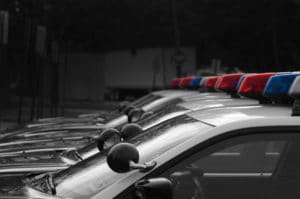LMPD May Not Show Up for Your Wreck
LMPD indicated yesterday that they will not be responding to non-injury car wreck and/or hit and run accidents. So, stop and think about the fact that when a car accident happens, you potentially have four claims immediately: 1) a claim for the damage to your vehicle; 2) a claim for the loss of use of your vehicle while it is being repaired or because it was a total loss; 3) a claim for any medical bills stemming from any injuries sustained in the car wreck and; 4) a claim for your pain and suffering. Even though LMPD may not show up, you should be proactive.
For the moment, just concentrate on 1 & 2 and realize that without a police report, YOU have the burden on obtaining detailed information so that you can get your car fixed! As a result, let’s discuss what steps YOU need to take as a consumer should you be in a car accident.
If there is not going to be a police report, the biggest change is realizing that the burden of getting detailed information about the car accident will fall to you! So, remember the old phrase that a picture is worth 1,000 words! The easiest way to gather information is to pull out your smart phone and go crazy by capturing the information through photographs.
What kind of information do you need?
- Where did the car wreck happen? Insurance carriers will want street names, cross-streets. You should note any landmarks that might be useful later on. Make a note as to which direction both drivers were traveling and on what street. Take photographs of the street signs.
- Take photographs of the location of the vehicles and the damaged area of each vehicle. Take a picture of the license plate of the other vehicle. For a Kentucky plate, we can run the license plate through the County Clerk and find out the insurance information for the last time that vehicle was registered.
- You are going to want the name, phone number and address of the other driver(s). You can find liability insurance for a car wreck on the driver of a vehicle or on the vehicle itself. As a result, you will want to know 4) does the other driver own the car they were operating? If not, get the name, address and phone number of the vehicle’s owner.
Be Proactive at the Crash Scene, Because LMPD May Not Show Up.
- Get the name and policy number of the other driver’s insurance carrier. When I call a claim into an insurance company, the first issue is can we locate an insurance policy on the at-fault driver. As a result, the more information I have, the better. So, take a picture of the at-fault driver’s license plate, insurance card, the vin number of the vehicle and the make and model of the vehicle. Correct, some of this may be overkill and you may not need to take all these steps. However, realize that without a police report, your personal injury claim against the at-fault driver will turn into an uninsured motorist claim against your own insurance carrier unless we know who hit you and who they are insured with. On that note, recall that Kentucky uninsured motorist coverage does not cover your vehicle; you need collision coverage for the property damage claim. So again, the lessen is go overboard on getting the information while you can so you can get your car repaired.
- For a hit and run accident, remember the law does not want me to hit a tree and then have a personal injury claim because I said someone ran me off the road. As a result, the law essentially requires contact between the two vehicles. Now, because LMPD may not show up, you need to create documentation. So, if you are involved in a hit and run car wreck and can’t get a police report, take a bunch of photographs. Take photographs of the damage to your car and the accident scene while at the scene of the wreck.
- Look for surveillance video that may have captured the car wreck at the surrounding businesses. It has become a regular part of my legal practice to look for videos of the car wreck. Why? Because when someone tries to argue my client was at fault for the car wreck, it is the best way to prove otherwise.
- Insurance carriers are going to be more likely to ask you to give a recorded statement if there is not a police report. Insurance companies have to investigate a claim, even property damage, and a recorded statement is one way to do that. While I am not a fan of recorded statements, they do seem more necessary when there is no police report. As a result, my advice to you is to remember what you hear on television, “Anything you say can and will be used against you in a Court of law.” So, don’t minimize your injuries and don’t guess at facts you don’t know. Usually, I like my clients to give the recorded statement to their own insurance carrier and then get that insurance carrier to share the statement with the at-fault driver’s carrier. Also, more importantly, if you did your job and collected a bunch of photographs, get those photographs to both insurance carriers. It may prevent the need for a recorded statement.
For additional information, you can listen to my podcast episode on What to Do after a Car Wreck. It provides some additional tips for your consideration.
I hope this article provides you with with some valuable information you and your loved ones my need, during the next few weeks and/or months, especially because LMPD may not show up. If you need to speak with me, you can call my cell phone at (502) 609-7657. Please drive safely.


